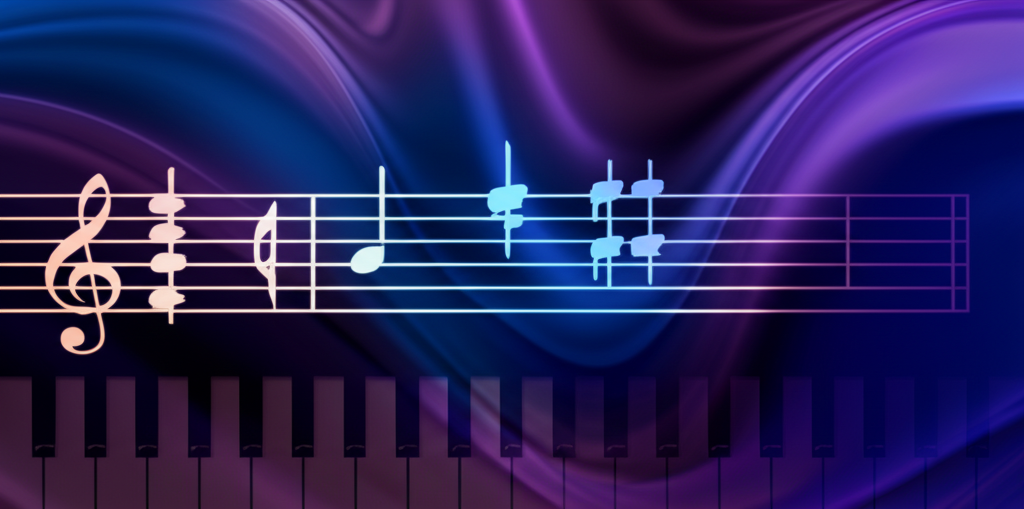Summary:
Minor chords are fundamental components of music, renowned for their melancholic, introspective, and emotionally complex character. This comprehensive guide delves into their theoretical structure, inversions, extensions, harmonic function, and practical use across all musical genres, offering essential knowledge for musicians, composers, and enthusiasts at every level.
Keywords:
Minor chord, music theory, minor triad, minor third, perfect fifth, harmony, chord structure, relative minor, parallel minor, emotional expression, chord progressions.
Introduction: What Makes a Minor Chord "Minor"?
The minor chord is one of music's most potent emotional storytellers. Its distinct sound—often described as sad, pensive, or mysterious—serves as the harmonic foundation for countless compositions across centuries and cultures. From the solemn drama of Beethoven's sonatas to the soulful introspection of modern R&B, minor chords provide the vocabulary for expressing our most profound emotions.
While major chords typically convey brightness, stability, and joy, minor chords offer a world of contrast, tension, and emotional depth. This essential duality creates the rich harmonic landscape that defines Western music. Understanding minor chords—how they're built, how they function, and how they're used—unlocks a deeper level of musical appreciation and provides indispensable tools for any songwriter, composer, or performer.
The Structure of a Minor Chord
At its core, a standard minor chord is a triad (a three-note chord) built by stacking specific intervals above a starting note, known as the root. The minor triad consists of:
- Root: The foundational note that gives the chord its name (e.g., A in an A minor chord).
- Minor Third: A note located three semitones (or 1½ whole steps) above the root. This interval is the "secret ingredient" that gives the minor chord its characteristic sound.
- Perfect Fifth: A note located seven semitones (or 3½ whole steps) above the root. This interval provides stability and resonance, and is identical to the fifth in a major chord.
The crucial difference between a major and a minor chord lies in the third. A minor third is one semitone "flatter" or lower than a major third, creating the melancholic quality our ears instantly recognize.
Minor Chord Formula
The formula for building any minor triad is simple:
Scale Degrees: Root (1) + Flatted 3rd (b3) + 5th
Interval Stack: Root + Minor Third + Major Third (e.g., in A minor: A to C is a minor third, and C to E is a major third).
Semitone Count: Root + 3 semitones + 4 semitones
Example: A Minor Chord
Let's build an A minor chord. Starting with the root A:
- The minor third is 3 semitones up from A, which is C.
- The perfect fifth is 7 semitones up from A, which is E.
The resulting notes are A - C - E.
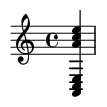
Minor Triads in All 12 Keys
Here is a reference list of the notes in every minor triad:
- A minor: A - C - E
- Bb minor: Bb - Db - F
- B minor: B - D - F#
- C minor: C - Eb - G
- C# minor: C# - E - G#
- D minor: D - F - A
- Eb minor: Eb - Gb - Bb
- E minor: E - G - B
- F minor: F - Ab - C
- F# minor: F# - A - C#
- G minor: G - Bb - D
- Ab minor: Ab - Cb - Eb
Chord Inversions: Changing the Flavor
Like all chords, minor triads can be inverted. Inversions rearrange the same notes to place a note other than the root in the lowest position (the bass) . This creates smoother transitions between chords (voice leading) and adds harmonic variety.
- Root Position: The root is the lowest note (e.g., A-C-E).
- First Inversion: The third is the lowest note (e.g., C-E-A).
- Second Inversion: The fifth is the lowest note (e.g., E-A-C).
A Minor Chord Inversions Example:
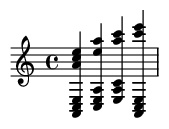
Minor Chord Extensions: Adding Color and Complexity
Musicians rarely stick to basic triads. Adding notes on top of the triad creates "extended" chords that are richer and more complex. These are especially common in jazz, R&B, and film scores.
- Minor 7th (m7) : Adds a minor 7th (10 semitones above root). The workhorse minor chord in jazz. (e.g., A-C-E-G for Am7).
- Minor 6th (m6): Adds a major 6th (9 semitones above root). Has a classic, sometimes nostalgic sound. (e.g., A-C-E-F# for Am6).
- Minor/Major 7th (mM7): Adds a major 7th (11 semitones above root). Creates a tense, mysterious, and often cinematic sound. (e.g., A-C-E-G# for AmM7).
- Minor 9th (m9): Adds a minor 7th and a major 9th. Sounds lush, sophisticated, and smooth. (e.g., A-C-E-G-B for Am9).
Extended Minor Chord Examples
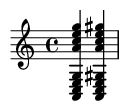
Relative and Parallel Relationships
Two of the most powerful concepts in harmony involve the relationship between major and minor keys.
- Relative Minor: Every major key has a "relative minor" key that shares the exact same notes and key signature. The root of the relative minor is the 6th degree of the major scale. For example, the relative minor of C Major (C-D-E-F-G-A-B) is A minor. This close relationship allows for seamless and emotional shifts between major and minor moods.
- Parallel Minor: A "parallel minor" shares the same root note as a major key but uses the minor scale structure. For example, the parallel minor of C Major (C-E-G) is C minor (C-Eb-G). Switching between parallel keys (e.g., C major to C minor) creates a sudden, dramatic change in emotional color. This technique is called modal interchange.
Relative Relationship: C Major (I) to A minor (vi)
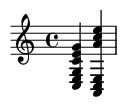
Parallel Relationship: C Major (I) to C minor (i)

The Harmonic Function of Minor Chords
In harmony, every chord has a function or role. Minor chords are incredibly versatile:
- In a Minor Key: The minor chord built on the root (the i chord) is the tonic, or "home" chord. The minor chord on the fourth degree (the iv chord) is the subdominant, creating a feeling of moving away from home.
- In a Major Key: Minor chords naturally occur on the 2nd (ii), 3rd (iii), and 6th (vi) degrees of the scale. The ii and vi chords are some of the most common and powerful chords in popular music.
- Predominant Function: Chords like the ii (minor) and iv (minor) are excellent "predominant" chords, setting up the tension of the dominant (V) chord before it resolves home.
- Modal Interchange: A major key can "borrow" chords from its parallel minor key for dramatic effect. Borrowing the iv chord (e.g., F minor in the key of C major) is a classic technique for adding a moment of poignant sadness.
Common Minor Key Progression: i - iv - V - i in A Minor
Notice how the V chord (E) is often made major (E-G#-B) to create a stronger pull back to the tonic (Am). This uses a G# from the A harmonic minor scale.
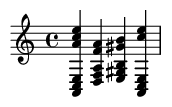
Practical Applications Across Genres
Minor chords are indispensable in nearly every style of music.
- Classical: Composers from Bach to Shostakovich used minor keys for drama, tragedy, and profundity. Think of Beethoven's "Moonlight Sonata" (C# minor) or Mozart's Symphony No. 40 (G minor).
- Jazz: Minor 7th chords are everywhere. The minor ii-V-i progression (e.g., Dm7(b5) - G7 - Cm) is a cornerstone of jazz harmony, appearing in countless standards like "Autumn Leaves" and "Blue Bossa."
- Blues & Rock: The minor pentatonic scale, built around the notes of a minor triad, is the soul of blues guitar solos. Rock anthems like Led Zeppelin's "Stairway to Heaven" (opening on Am) and Pink Floyd's "Comfortably Numb" (verse in Bm) harness minor chords for epic emotional weight.
- Pop: Contemporary pop thrives on the emotional immediacy of minor chords. Songs like Adele's "Rolling in the Deep" (Cm), The Weeknd's "Blinding Lights" (Fm), and Billie Eilish's "bad guy" (Gm) use minor keys to create unforgettable, moody hooks.
- Folk & World Music: Minor tonalities are central to folk traditions worldwide, from Spanish flamenco and its Phrygian flavors to the soulful melodies of Eastern European klezmer.
Iconic Songs Featuring Minor Chords
- "Hotel California" (Eagles): The legendary progression is in B minor.
- "Losing My Religion" (R.E.M.): Built on a simple, driving Am - G progression.
- "Eleanor Rigby" (The Beatles): A masterclass in E minor, creating a feeling of desolate loneliness.
- "Creep" (Radiohead): The G - B - C - Cm progression is iconic. The sudden shift from C major to C minor is a perfect example of parallel modal interchange, creating the song's signature emotional lurch.
- "Billie Jean" (Michael Jackson): The infectious bassline and harmony are rooted in F-sharp minor.
How to Play Minor Chords on Your Instrument
Piano
To change a major chord to minor, simply lower the middle note (the third) by one half step (one key to the left). For an A minor chord in root position (A-C-E), you can use fingers 1, 3, and 5 (thumb, middle, pinky) of your right hand.
Guitar
Guitar offers many "shapes" for minor chords. The open A minor chord is one of the first most players learn. From the lowest string to highest, it is played: X (don't play low E string) - 0 (open A string) - 2 (2nd fret D string) - 2 (2nd fret G string) - 1 (1st fret B string) - 0 (open high E string).
Psychological and Emotional Impact
Why do minor chords sound "sad"? While much of this is cultural conditioning from centuries of Western music, there are psychoacoustic reasons. The frequency ratio of the minor third is more complex and creates more "beating" (acoustic roughness) than the simpler ratio of a major third. This subtle dissonance is interpreted by our brains as tension or instability, which we associate with more complex emotions like sadness, longing, or contemplation.
Conclusion: The Power of Emotional Nuance
Minor chords are far more than just "sad" chords. They are powerful vehicles for emotional nuance, capable of expressing a vast spectrum of feelings that major chords alone cannot capture. Their unique sound, created by that all-important minor third, opens up worlds of tension, mystery, reflection, and drama.
To truly understand music is to understand the role of the minor chord. As you listen, train your ear to hear its distinctive color. Notice how it creates moments of shadow in a bright progression or serves as the deep, resonant foundation for an entire song. By internalizing its sound and function, you not only deepen your appreciation for the music you love but also gain one of the most vital tools for your own creative expression.
The beauty of the minor chord is its honesty. It reflects the complexity of human experience, reminding us that in music, as in life, there is profound beauty to be found in the shadows.
References:
Kostka, S., & Payne, D. (2018). Tonal Harmony: With an Introduction to Post-Tonal Music (8th ed.). McGraw-Hill Education.
Levine, M. (2011). The Jazz Theory Book. Sher Music Co.
Aldwell, E., Schachter, C., & Cadwallader, A. (2018). Harmony and Voice Leading (5th ed.). Cengage Learning.
Huron, D. (2006). Sweet Anticipation: Music and the Psychology of Expectation. MIT Press.
